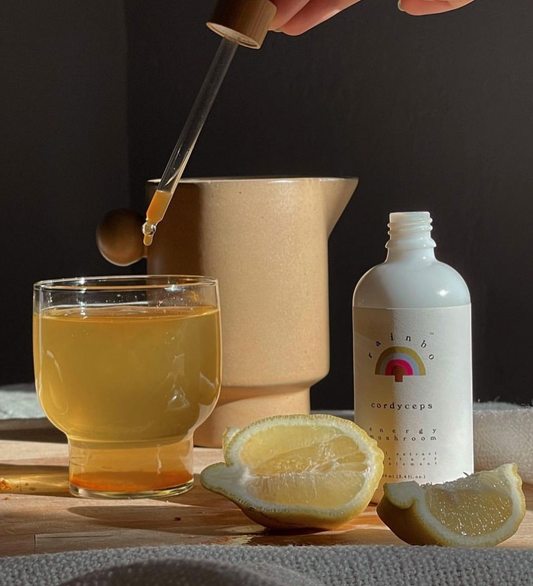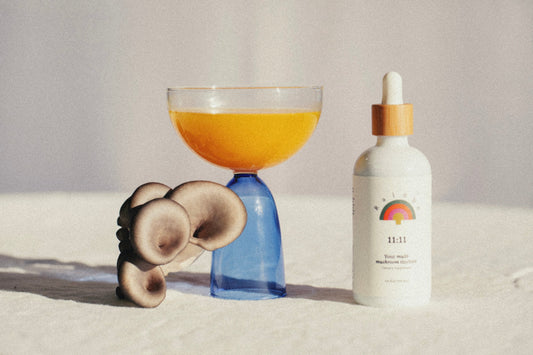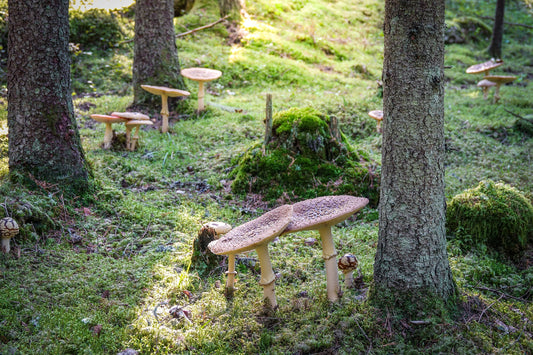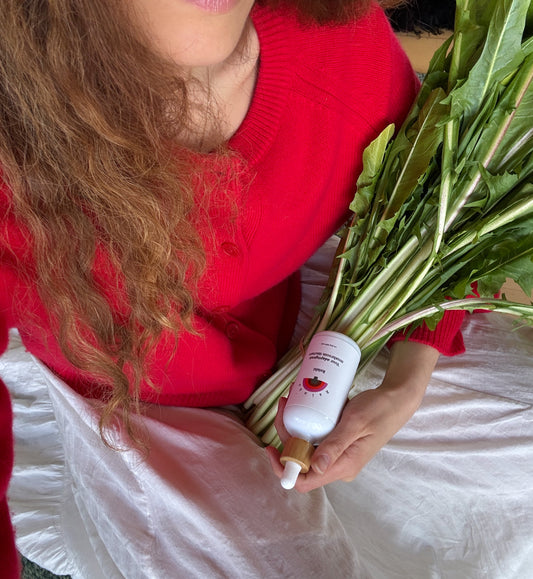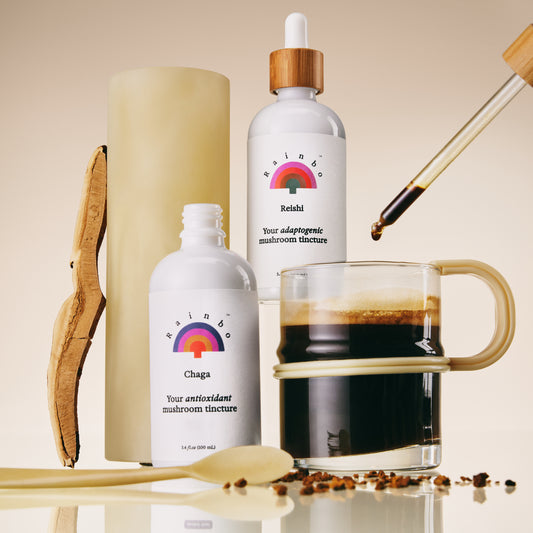Fruiting Body vs Mycelium
When we talk about 'mushrooms' at large, we are generally referring to the fruiting body structure of the fungus. However the mushroom structure isn't a complete picture of fungi! Fungi also have a whole underground body called mycelium. Mycelium is a vast, ecological cellular network that spans nearly every corner of our planet. But, it's invisible to the eye!
Mycelium
- The below-ground body of the fungus consisting of a network of thin filaments.
- The body (non-sex cells) of the fungus.
Fruiting Body
- The visible, above-ground structure of the fungus. A mushroom is an example of a fruiting body.
- The reproductive structure of the fungus ie. produces spores.

Why is this distinction so important?
-
Scientific studies have shown that most of the beneficial bioactive compounds are found in higher concentrations in the fruiting bodies compared to mycelium.
-
Often when cultivated in the lab, the mycelium cannot be separated from the grain it's grown on. When mycelium is used in an extraction process, a large portion of the extracted compounds come from the grain substrate and are not bioactive.
It's important to know what your mushroom supplement is made from!
Rainbo's are made from fruiting body with two exceptions. Agarkion is an old growth fungus that cannot be cultivated to fruiting body stage in the lab and so we use lab-cultivated mycelium in our 11:11 tincture as it's also shown to have medicinal properties. Lion's Mane mycelium has been shown to produce medicinal compounds called Erinacines that are not found in the fruiting body and so in an effort to include these compounds in our final extracts we use 10% mycelium when making our Lion's Mane tinctures.

